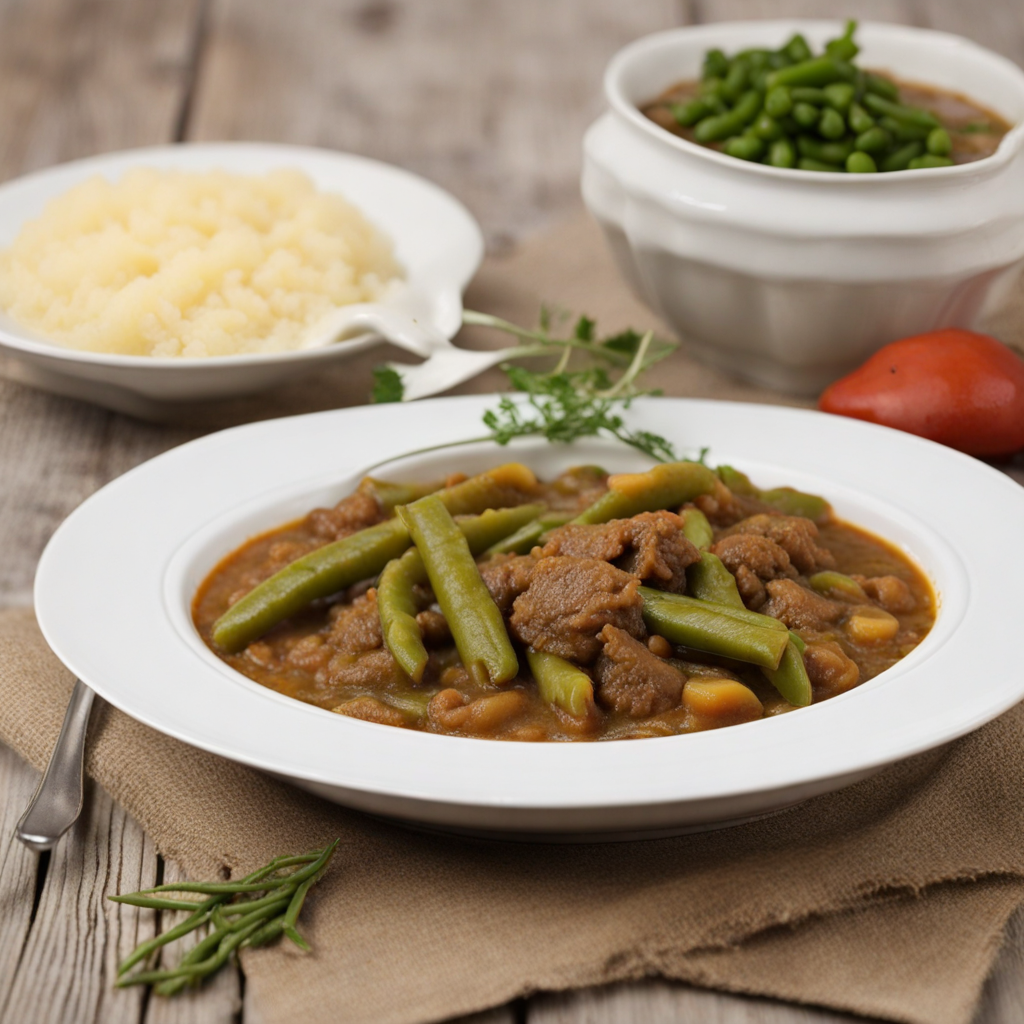Koesister
Koesisters are a delightful South African treat that beautifully encapsulates the country's rich cultural heritage. Originating from the Cape Malay community, these sweet, spiced doughnuts are deep-fried to a golden brown and then generously coated in a syrup infused with fragrant spices. The dough itself is typically flavored with cinnamon, nutmeg, and cardamom, giving each bite a warm and aromatic profile that is both comforting and inviting. The texture is soft and fluffy on the inside, contrasted by a slightly crispy exterior, making them a perfect indulgence for any time of day. The syrup that envelops the Koesisters is a key component, often made from sugar, water, and a medley of spices such as anise and ginger. This sticky glaze not only adds sweetness but also enhances the flavor, creating a harmonious balance that is utterly addictive. Traditionally, Koesisters are enjoyed during special occasions, celebrations, or even as a delightful breakfast item, often served with a cup of tea or coffee, making them an integral part of social gatherings in South Africa. What sets Koesisters apart from other fried sweet treats is their unique spiced flavor and the way they evoke a sense of nostalgia and community. Each bite transports you to the vibrant streets of Cape Town, where the rich history of the Malay culture comes alive. Whether you are indulging in them at a local bakery or trying your hand at making them at home, Koesisters offer an unforgettable taste experience that reflects the warmth and diversity of South African cuisine.
How It Became This Dish
The Koesister: A Sweet Journey Through South African Heritage Origins and Early Beginnings The Koesister, a beloved sweet treat hailing from the Cape Malay community of South Africa, is a rich and flavorful doughnut-like pastry that reflects the intricate tapestry of the nation’s culinary heritage. The origins of the Koesister can be traced back to the 17th century when the Dutch East India Company established a refreshment station at the Cape of Good Hope. This period marked the beginning of significant cultural exchanges between the indigenous Khoisan people, enslaved individuals brought from parts of Africa and Southeast Asia, and European settlers. The name "Koesister" is derived from the Malay word "kue," meaning cake or pastry, and the Afrikaans word "suster," meaning sister. This suggests a blend of influences, particularly from Malay culture, which played a pivotal role in shaping the food landscape of the region. The Koesister is not merely a snack or dessert; it represents a confluence of cultural narratives, stemming from the historical struggles and triumphs of the Cape Malay people. Cultural Significance The Koesister is more than just a delicious confection; it is deeply ingrained in the cultural and social fabric of the Cape Malay community. Traditionally, these pastries are enjoyed during significant communal gatherings and celebrations, such as Eid al-Fitr, weddings, and family reunions. The preparation and sharing of Koesisters is often a communal activity, strengthening bonds within families and the broader community. The Koesister is typically spiced with a mixture of cinnamon, cardamom, and nutmeg, which reflects the aromatic heritage of Southeast Asian cuisine. The dough is often enriched with coconut, adding a rich texture and flavor that makes it distinct. After being deep-fried, the Koesisters are rolled in a mixture of sugar and desiccated coconut, creating a sweet, sticky exterior that contrasts beautifully with the soft, spiced interior. This pastry also serves as a symbol of resilience and cultural identity for the Cape Malay community. Throughout South African history, particularly during the apartheid era, the act of preparing and sharing traditional foods became a form of resistance against cultural erasure. The Koesister stood as a testament to the community's ability to preserve their culinary traditions in the face of adversity. Development Over Time As South Africa underwent significant political and social changes, the Koesister evolved alongside these transformations. In the late 20th century, as the country began to emerge from apartheid, there was a renewed interest in indigenous foods and culinary heritage. This renaissance brought the Koesister into the spotlight, with many chefs and home cooks experimenting with and modernizing the traditional recipe. Today, Koesisters can be found in various forms across South Africa, with each region putting its own spin on the classic recipe. Some versions incorporate unique fillings, such as jam or fruit, while others may be topped with different glazes or icings. This adaptability speaks to the Koesister's enduring appeal and its ability to resonate with new generations. In urban areas, Koesisters have also made their way into trendy cafés and bakeries, often served alongside coffee or tea. This shift reflects a broader trend within South African cuisine, where traditional dishes are being reinterpreted for contemporary palates. However, despite these modern adaptations, the essence of the Koesister remains intact, serving as a delicious reminder of the community's rich history and cultural significance. Koesisters in the Modern Era In recent years, the Koesister has gained popularity beyond the borders of South Africa, attracting interest from food enthusiasts and culinary explorers worldwide. This growing recognition has led to the inclusion of Koesisters in food festivals and cultural events, where they are celebrated as a symbol of South African heritage. Chefs are increasingly incorporating Koesisters into their menus, showcasing the dish's versatility and inviting diners to experience a taste of the Cape Malay culture. Moreover, the Koesister has become emblematic of the broader movement towards the appreciation of African cuisine on the global stage. Food bloggers and social media influencers are sharing their interpretations of the dish, contributing to a growing narrative around the importance of preserving culinary traditions while embracing innovation. Conclusion The Koesister is more than just a pastry; it is a narrative woven into the fabric of South Africa's history, culture, and identity. From its origins in the kitchens of the Cape Malay community to its modern iterations in trendy cafés and international food festivals, the Koesister continues to evolve while remaining deeply rooted in tradition. It serves as a reminder of the resilience of the Cape Malay people and their ability to adapt and thrive in the face of adversity. As we savor each bite of a Koesister, we partake in a shared history—one that celebrates the richness of South African culture and the enduring power of food to connect us across generations and borders. Whether enjoyed at a festive gathering or as a simple afternoon treat, the Koesister remains a delectable emblem of heritage, community, and the sweet flavors of South Africa.
You may like
Discover local flavors from South Africa







